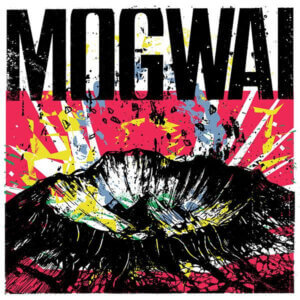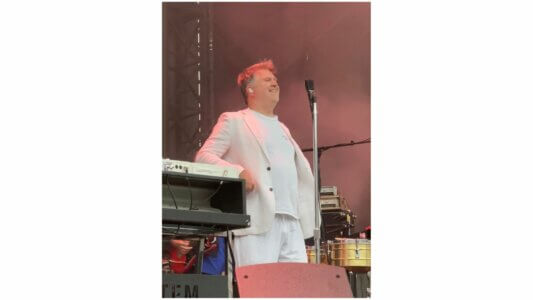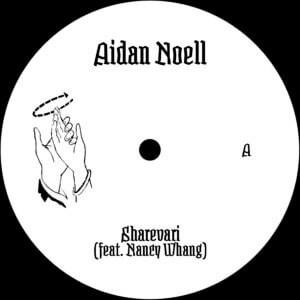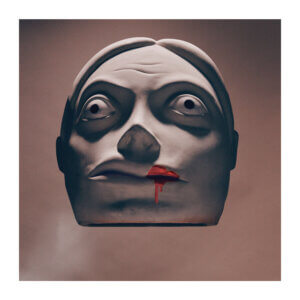Interview With Museum Of Love’s Pat Mahoney

Museum of Love is the musical collaboration of Pat Mahoney (ex LCD Soundsystem) and Dennis McNany. Together, they have created an album that uses electronica to flip back to great classics while creating music that feels brand new. Clever lyrics weave in and around the city beat, part of a sharp, arty atmosphere full of carefully curated sounds. The self-titled new album, Museum of Love, has just been released on DFA, and Northern Transmissions needed to hear about what’s on display in this museum. Alice Severin spoke with Pat Mahoney about the recording process, how lyrics are made, and the wonders of vintage gear.
Northern Transmissions – Thank you for taking the time to talk about the album.
Pat Mahoney – It’s nice to talk about it. It seems like it’s taken forever to come out, there were some issues with our release date. Now it’s out in the world. We sort of sat on it, without that being explicitly a plan between us, so all of our friends are hearing it right now. And they’ve said some really nice things, so we’re just really happy and proud to have this thing out there. It feels lucky to get it out there in front of people.
NT – So, how are you? Where are you?
PM – I’m in New York. I live in Bedford-Stuyvesant – in Brooklyn.
NT – It’s a beautiful day here.
PM – It’s gorgeous out. All the children are out of the house, so it’s quiet and peaceful. So yeah, a good day over here.
NT – How many kids have you got?
PM – I’ve got three. Two teenagers and a baby.
NT – Do they listen to your music?
PM – It’s not really their thing, which is kind of perfect I think. If it aligns too well, then someone would be doing something wrong. (laughs)
NT – So this new output has happened not too long after LCD Soundsystem ended. And that was a big thing – with the sold-out tickets and shows.
PM – A giant publicity stunt, yes.
NT – I don’t think anybody didn’t hear about it, for all sorts of reasons – everything with the scalpers, that was got a lot of attention.
PM – Yeah.
NT – But you’ve jumped back in, relatively quickly.
PM – Yeah, sort of accidentally, because Dennis asked me to play some drums on things he was working on. I did a one day drum session with him and I thought that was that. I’ve never wanted to be a session guy, because I’m not that good at that sort of thing, I always make music with friends so I thought it was just like a passing collaboration. But then a few months later he said, I’ve made a couple of things with the session we did, do you want to try and develop it? And that’s kind of how this project started.
NT – Do you play other instruments besides the drums on this?
PM – I synth program and I can pick things out on a keyboard, I’m not a multi-instrumentalist. Dennis is – which is good. (laughs) He’s at least a two man band. So, I wrote some things for the record, but I don’t play anything else.
NT – Was your approach to drums a little bit different on this? And do you play live drums, then sample them and use them in different ways, or is it more just live drum tracks mixed in?
PM – Well, that was the thing that kind of helped us figure out what our approach would be to songwriting, because we were originally working with cut up live drums that I’d played but they were really low quality because we didn’t do it in a proper studio. And we struggled to make the live drums work, and then we scrapped them and just programmed everything. That sort of informed the way we made the whole record. We did more drum machine programming, but if it felt like it needed live drums, I would go in and play live drums over the drum machine, or we would start from the beginning and play live drums, but then sample them, and chop them up and arrange them, like a drum machine. That was a part of the recording process for us.
NT – When you chop up the drums, and sample them, what do you like about doing that? What do you think that adds to the sound and feel?
PM – A lot more control. (laughs) You don’t have to worry about a shitty take. It’s, you know, you have a good idea, but your execution isn’t flawless, and it’s not going to hit you up for the rest of working on that song. You can just kind of play god, and move things around. There’s something great about doing takes and being in a room by yourself or with other musicians, and making something that is time-bound in that way. I also really love to do that. But sometimes I’ll have a good idea, and only ten seconds of it are usable, but then you can make a song out of those ten seconds.
NT – That’s really interesting, that idea of it being time-bound too, something live, and being able to change that.
PM – I remember when the Daft Punk record came out and they said, we made this record with real musicians, and I was like, well, (laughs) that’s how everyone did it until 15 years ago. You just had to get a take.
NT – You had some electronic musicians chopping things up, but obviously it was a lot harder to do than it is now, with the technology.
PM – Right. Technically, you edited tape, which is amazing to think about that. You know, it was a process that would literally take days, and now it takes seconds.
NT – Yeah, I was just listening to somebody talk about that – describing the process of chopping up bits of tape and now, pretty much, you just slide things around, parts on the screen.
PM – Yeah. I mean, that decisiveness, having to chop up tape, it’s kind of cool. It’s like you really have to adhere to your decision. I think that what sometimes can be paralyzing with digital music production is that you have endless options. And sometimes it’s good just to decide on something. In the studio we try and create situations where we have to commit to things, whether it’s doing a drum take, chopping it up, but then committing to a two-track mix, instead of having all the drums up on the desk when we’re mixing. Just getting sound and using it.
NT – Yeah, instead of thinking about it endlessly.
PM – Yeah. (laughs)
NT – The album is not light years away from LCD Soundsystem. Yet it’s got a bit more of a subtle feel to it. How would you describe it?
PM – That makes some sense to me. It’s…LCD was influenced by the band that it became. But at the end of the day it was always James’ baby. So it was not a true collaboration, in that sense, even though some of the sounds, I would say, were derived from what it came to be live. As the records progressed, it became less of a studio band, and more reflective of the live experience. But Museum of Love is something that’s always been a collaboration. So it’s two people negotiating, and bringing ideas, rather than coming from one vision of the world.
NT – And you and Dennis McNany first worked on something that Gary Numan did some vocals on.
PM – Yeah, it was a remix for Battles.
NT – Did you have a similar way of looking at things, or working on music that brought you together?
PM – I think why our collaboration has been so fruitful is that we have a similar aesthetic, but really different ways of getting there. Dennis is a multi-instrumentalist, and he has a ton of ideas. His instinct is to add; my instinct is to subtract. So it balances nicely. We have to justify the things we’re adding. We have to justify the things that we’re removing. But we trust each other enough to be like, ok, let’s strip everything away and find out what’s essential about this, or it still needs something, I’m going to chase a sound and put it back in.
NT – I wanted to ask you about “The Who’s Who of Who Cares” which is a great track, and how that song came together. It’s definitely got like a Roxy Music feel to it, and the vocal is a bit like Bryan Ferry.
PM – He’s totally my hero, so I wanted that emphasis as well. So that is certainly in there. It’s funny, when we started working together, we weren’t like, let’s start a band and we’re going to make a record. We were just hanging out and talking about art, food, and whatever. And it all grew out of just hangout sessions. And one thing that Dennis does, that he’s really good at, is he writes little snippets of conversations down, so he’s got papers up all over his walls that just have lines. And one of them, that he came up with – we made most of this record in his living room – was “who’s who of who cares” and it was kind of kicking around in both of our imaginations for a while. That song sort of sprang into being relatively easily. I’d tried to write songs for a long time, I’d tried to write lyrics to songs. It was a miserable failure, at least in my own opinion. And this project was the first time where things started to click. But partly that was because there was this back and forth, and we would have themes. And we would not try to write lyrics, we would just try and say something, and turn that into lyrics. So a lot of it is like these things that just come out, they might be a joke or whatever that we’re telling each other and a little bit of it is usable and we just save them all.
NT – There’s another lyric I wanted to ask about, that sounds like it might have come about in the same way. In “Monotronic” – “Welcome to our nation with its fatal concentration of wealth and want,” which has got so much rhythm besides being a great line.
PM – (laughing) That was actually – my wife is French, and it’s a long story, but right when she moved to the United States, we were about to get married, and we got kicked out of our apartment. It ended up being this year-long battle. And she was like, what is this country? You’re on your own. So that song comes out of that whole experience.
NT – That sounds awful. New York particularly, I think, leaves you to it.
PM – It was something I had never reflected on until I started having a lot of European friends, where your expectations of your government and your fellow citizens are really different. Being married to someone who is European and just having a different baseline of expectations has been a huge eye opener.
NT – Have you ever thought of going and living in Europe, or do you spend a lot of time there?
PM – We had thought that we would spend more time there, but with kids in school here, it just doesn’t happen. We kept her apartment in Paris, but we had to give it up, because we were just never there. I could live in Paris for a while – I don’t know if I could move there permanently, but it’s one of my other favorite cities, besides New York.
NT – You are a visual artist too. Do you get involved in the visual side, like the little videos that were a part of the promotion, or the video with the squash court, or the pictures for the album? Like the pictures of the two of you – was that twigs, or wires, or The Wicker Man?
PM – They are called ghillie suits, and they are camouflage for hunters, and for the military. And, somewhat typically, Dennis and I, we needed to do some press shots and we are both a little bit shy. So we were like, this is great, we are going to camouflage ourselves, and go blend into a bush somewhere. (laughs) But then our friend Tim Saccenti, who shot the cover and worked with the graphic design, we gave him creative control over actually what happened. We just told him our idea, and he was like, no, we’re going to shoot it in the studio in black and white and it’s going to turn sculptural. The camouflage was going to stand out from the background, which is, I think, a totally brilliant, simple idea and once we saw the first shots, we were just like, yes, this is exactly perfect. So we just made a video ourselves. Our manager comes out of the production world, so he can handle the technology. He has a small lighting setup and a nice camera, so we have been to make things on essentially no budget, because DFA has none, video budgets don’t exist probably for most labels, but certainly not for DFA. We collaborated with our friend Sophie Grandier, who makes short films, to do the first one. We loved her whole aesthetic. So we asked her to do one, and we produced it in my living room. So, yeah, we definitely take part in the making of those things. We are super fortunate to work with people who are donating their time and talents, and who we also trust enough to just be like do this. So the squash video was an old friend of Dennis’ – it was something that he wanted to make, and we just put ourselves in his hands.
NT – It goes with the lyrics, that idea of squash being a sort of elitist sport for some people anyway.
PM – Oh, totally. For me, I think it’s super funny. You know some people called it racquetball, and some people called it squash, and it’s like there is a total class thing going on there. And that was something that we attempted to interrogate, that is part of the subliminal background. I think that is awesome. I didn’t grow up playing squash, I’d never been in a squash uniform, I had no idea that world existed. (laughs)
NT – Do you have plans to tour the album?
PM – We are trying to figure that out right now. We certainly want to. We’ve done a couple of shows now. I certainly find playing live to be tremendously rewarding and it’s something that I instantly missed even though I was relieved that the LCD circus wound down. I just like being on stage. So that is definitely part of the plan.
NT – There’s a lot of logistics translating the album to a live environment.
PM – Yeah, we made the record with any bit of gear that we liked. We would just fool around with it and come up with things and then make it. But then obviously you can’t tour, or at least as broke as we are, you can’t tour with a bunch of 1970s and 80s electronic gear. It would just break constantly. And the excess baggage charges would be astronomical. So we have to do it with more modern and reliable stuff.
NT – What’s the oldest piece of equipment you used on the album?
PM – It’s actually listed on the sleeve of the record. So there’s a bunch of old analog synthesizers and effects units. We both get a kick out of studio nerd stuff. We like gear. So we compiled a list of everything we used to make it for other people who appreciate that kind of thing.
NT – Older gear has more of a “feel” to it, different personalities, I guess people would say.
PM – Well yeah, they do have personalities. They do have their own unique timbre that are more like instruments rather than like a machine that will replicate everything. It’s sort of coming back. The few synthesizer manufacturers that still exist are now making gear that is more like the gear that they used to make. The whole history is super interesting. There was an aspect of the development of it, where they were trying to recreate acoustic instruments. A big part of the history is being able to recreate the pluck of a guitar string, which was very difficult until the 1980s. But then I think the manufacturers have gone back and realized that people loved the mistakes. The fact that you couldn’t make a plucked guitar string was hardly a problem for people who started making electronic music. So now they are making gear that has more personality, more limpid.
NT – It’s amazing the way things come around. Certainly there has been a lot of discussion on how sound has changed. There’s so much more technology but sound is maybe becoming less varied.
PM – Yes, the homogenizing effect that happens in pop music. It’s always been there, but… I was listening to the new Caribou record the other day. That’s a very rich, lovely record. It has really great sounds on it. And that record has been doing really well, as far as I can tell. So even though the lowest common denominator has been pretty miserable at times, there’s always the hunger for really great sounding things. Those people still make it, and I think there’s an audience for it.
NT – And five albums that you come back to, that had an influence on you.
PM – OK. I would say…that’s a tough one, because there are things that I have returned to for decades, and there are things that I’ve been obsessed with for the last year, or the last five years, or whatever. But just off the top of my head –
John Cale – Fear
Robert Wyatt – Old Rottenhat
Brian Eno – Here Come the Warm Jets
Roxy Music – For Your Pleasure
Bob Dylan – Highway 61 Revisited
Alice Severin
Latest Reviews
Tracks
Advertisement
Looking for something new to listen to?
Sign up to our all-new newsletter for top-notch reviews, news, videos and playlists.











